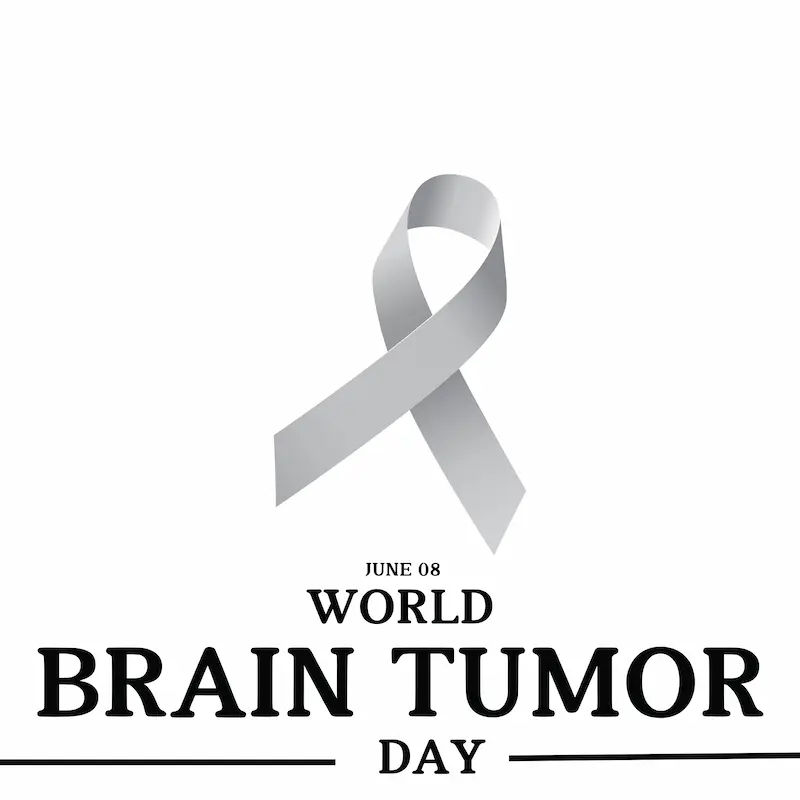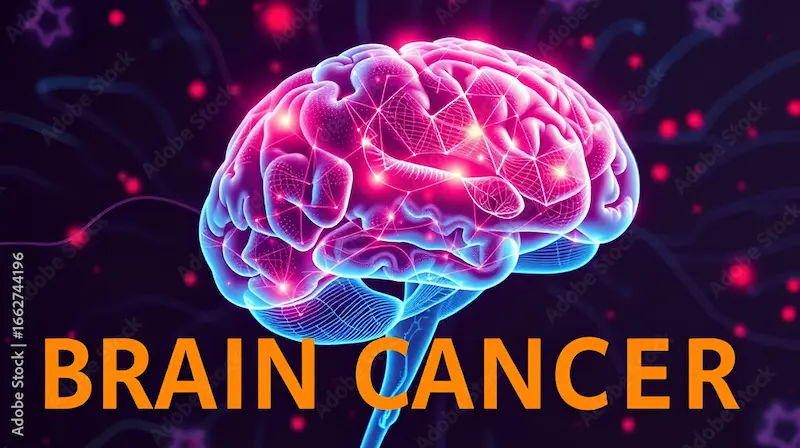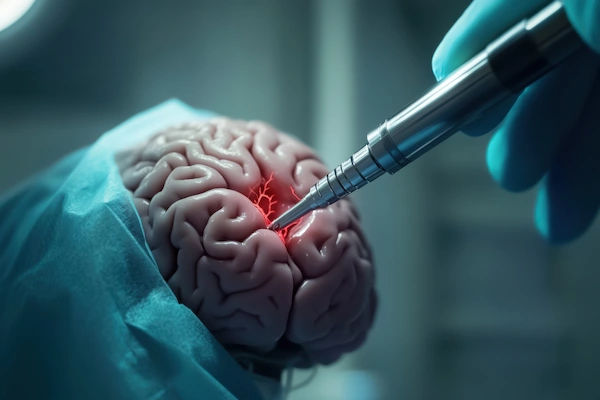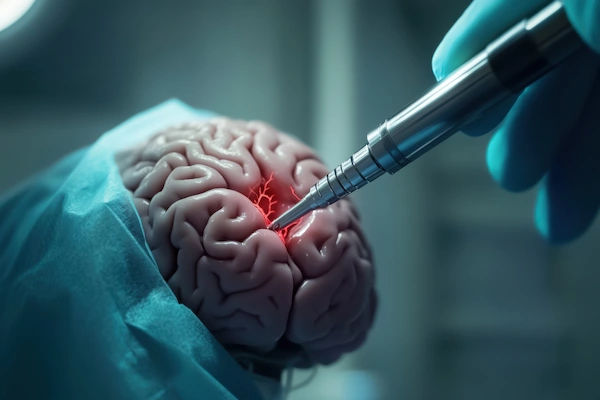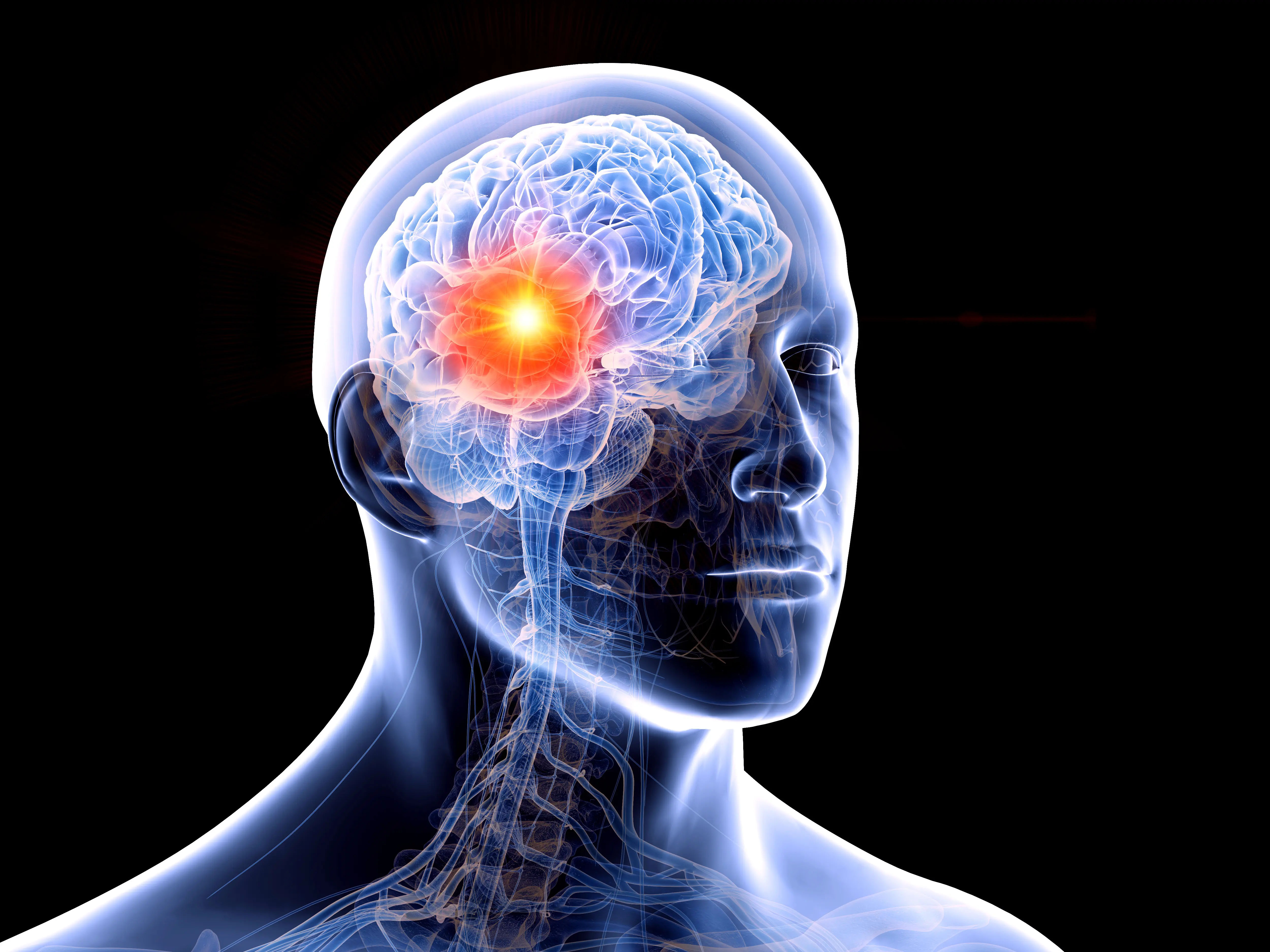Guide to Types Of Brain Tumours
Discover the types of brain tumours, common symptoms, diagnostic methods, and available treatment options for better awareness and care.

Written by Dr. Rohinipriyanka Pondugula
Reviewed by Dr. Shaik Abdul Kalam MD (Physician)
Last updated on 9th Oct, 2025
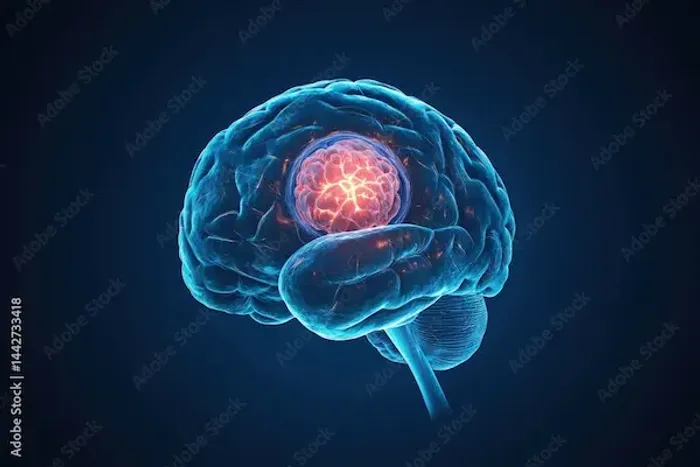
Introduction
Finding out about a potential brain tumour diagnosis can be an overwhelming experience, filled with complex medical terms and uncertainty. The brain, our body's command centre, is a profoundly complex organ, and when something goes awry within it, the implications can feel immense. This guide aims to demystify the world of brain tumours, providing a clear, comprehensive overview of the different types, their characteristics, and what to expect. Whether you're seeking information for yourself or a loved one, knowledge is the first step toward empowerment. We will break down the essential categories, from common gliomas and typically non-cancerous meningiomas to the critical distinction between primary and metastatic tumours. Our goal is to equip you with a foundational understanding of the symptoms, diagnostic processes, and general treatment landscapes, always emphasising the importance of partnering with a specialised medical team for personalised care.
What is a Brain Tumour? The Basics
A brain tumour is a mass or growth of abnormal cells in or around the brain. The skull, which encloses the brain, is very rigid. Any growth inside such a restricted space can cause problems by pressing on sensitive brain tissue, disrupting function, and increasing pressure within the skull. It's crucial to understand that not all brain tumours are the same; they are classified based on their origin and behaviour, which directly influences diagnosis and treatment.
Primary vs. Metastatic Brain Tumours: What's the Difference?
This is the most fundamental distinction.
- Primary Brain Tumours: These originate in the brain itself. They develop from cells within the brain or its immediate surroundings, such as the meninges (protective membranes), cranial nerves, pituitary gland, or pineal gland. Primary brain tumours may be benign (non-cancerous) or malignant (cancerous). This article will primarily focus on the various types of primary brain tumours.
- Metastatic (Secondary) Brain Tumours: These are more common than primary brain tumours. They occur when cancer cells from another part of the body, such as the lung, breast, kidney, or skin (melanoma), spread (metastasise) to the brain. These tumours are always malignant.
Benign vs. Malignant Brain Tumours
This classification refers to the tumour's aggressiveness.
- Benign Brain Tumours: These are slow-growing, have distinct borders, and do not spread to other parts of the body. However, "benign" does not mean harmless. Depending on their size and location, a benign tumour can press on critical areas of the brain, causing serious neurological problems and can even be life-threatening.
- Malignant Brain Tumours: These are cancerous, containing cells that grow rapidly and often invade surrounding healthy brain tissue. They can be life-threatening due to their aggressive nature. Malignant primary brain tumours rarely spread outside the brain and central nervous system.
Consult a Neurosurgeon for the best advice
A Deep Dive into Common Types of Primary Brain Tumours
There are over 120 documented types of brain tumours. They are typically named after the type of cell they originate from or the location in the brain where they arise.
Gliomas: The Most Prevalent Category
Gliomas are a broad category that account for about 30% of all brain tumours. They originate in the glial cells, the supportive tissue of the brain. This category includes some of the most well-known and challenging brain tumours.
Astrocytomas (including Glioblastoma)
These tumours arise from star-shaped glial cells called astrocytes. They are graded from I to IV based on their
aggressiveness.
- Grade I & II (Low-Grade): These are slower-growing. Pilocytic Astrocytoma (Grade I) is common in children and has
a high cure rate with surgery. - Grade III (Anaplastic Astrocytoma): These are malignant and grow more rapidly.
- Grade IV (Glioblastoma Multiforme or GBM): This is the most aggressive and common malignant primary brain
tumour in adults. Despite being the most common, the survival rate for glioblastoma remains a significant challenge, with treatment focusing on slowing progression and managing symptoms.
Oligodendrogliomas
These develop from cells called oligodendrocytes, which produce the insulation for nerve cells. They are typically slower-growing (low-grade) but can become more aggressive over time. They often occur in the frontal lobes and are more common in adults.
Ependymomas
These arise from ependymal cells that line the ventricles (fluid-filled spaces) of the brain and the center of the spinal cord. They can occur in both children and adults and may block the flow of cerebrospinal fluid, causing hydrocephalus.
Meningiomas: Typically Non-Cancerous
Meningiomas are the most common primary brain tumours, accounting for about 30% of cases. They develop from the meninges (the layers of tissue covering the brain and spinal cord). The vast majority (over 90%) are benign (Grade I) and slow-growing. They are more common in women and often discovered incidentally. While often manageable, their location can cause serious symptoms if they press on the brain.
Pituitary Adenomas
These tumours develop in the pituitary gland at the base of the brain. They are almost always benign. However, because the pituitary gland controls many of the body's hormones, these tumours can cause significant endocrine problems by producing excess hormones or by compressing the gland and causing hormone deficiencies.
Medulloblastomas: A Common Pediatric Brain Tumour
These are fast-growing malignant tumours that develop in the cerebellum (the part of the brain controlling coordination). They are the most common malignant brain tumour in children. While aggressive, they often respond well to treatment involving surgery, radiation, and chemotherapy.
Other Notable Primary Brain Tumours
- Schwannomas (e.g., Acoustic Neuroma): Benign tumours arising from Schwann cells that insulate cranial nerves. Vestibular schwannomas affect the nerve for balance and hearing.
- Craniopharyngiomas: Rare, benign tumours that occur near the pituitary gland, most often in children.
Recognising the Signs: Symptoms of a Brain Tumour
The symptoms of a brain tumour are varied and depend heavily on the tumour's size, location, and rate of growth. General signs may include:
- New onset or change in pattern of headaches.
- Headaches that gradually become more frequent and severe.
- Unexplained nausea or vomiting.
- Vision problems, such as blurred vision, double vision, or loss of peripheral vision.
- Gradual loss of sensation or movement in an arm or leg.
- Difficulty with balance or speech.
- Confusion in everyday matters.
- Personality or behaviour changes.
- Seizures, especially in someone with no history of them.
- Hearing problems.
It is critical to note that these symptoms can be caused by many other conditions. However, if you experience persistent or worsening neurological symptoms, it is essential to seek medical evaluation.
How Are Brain Tumours Diagnosed?
If a brain tumour is suspected, a neurologist will typically start with a detailed neurological exam to test vision, hearing, balance, coordination, and reflexes. The cornerstone of diagnosis is imaging. A diagnosis with MRI (Magnetic Resonance Imaging) is the gold standard, as it provides detailed images of the brain. In some cases, a CT scan may be used. A definitive diagnosis, however, usually requires a biopsy, where a sample of the tumour tissue is removed and analysed by a neuropathologist to determine the exact type and grade.
Treatment Options for Brain Tumours
Treatment options for a brain tumour are highly personalised and depend on the tumour's type, size, grade, and location, as well as the patient's overall health. A multidisciplinary team of neurosurgeons, neuro-oncologists, and radiation oncologists will determine the best approach. Options include:
- Surgery: The preferred treatment when possible, aiming to remove as much of the tumour as feasible without damaging neurological function.
- Radiation Therapy: Using high-energy beams to target and kill tumour cells.
- Chemotherapy: Using drugs to destroy cancer cells.
- Targeted Therapy: Drugs that target specific abnormalities present within cancer cells.
- Tumour Treating Fields (TTF): A novel approach that uses electrical fields to disrupt cancer cell division.
Conclusion: Empowerment Through Knowledge
Navigating a potential or confirmed brain tumour diagnosis is a journey that requires courage, support, and reliable information. Understanding the different types of brain tumours, from the aggressive nature of a glioblastoma to the often-manageable presence of a meningioma, provides a crucial framework for discussions with healthcare providers. Remember, each case is unique, and advances in medical science are continually improving the outlook for many patients. This guide serves as a starting point for your understanding. The most important step is to engage with a qualified medical team who can provide a precise diagnosis and create a tailored treatment plan. Knowledge empowers you to ask the right questions and actively participate in your health journey.
Consult a Neurosurgeon for the best advice
Consult a Neurosurgeon for the best advice

Dr. Shameem Ahmed
Neurosurgeon
24 Years • MCH (Neuro Surgery), MS(General Surgery), Brain and Spine Surgeon, MBBS
Guwahati
Apollo Hospitals G S Road, Guwahati
(125+ Patients)

Dr Debnath Dwaipayan
Neurosurgeon
9 Years • MBBS, MS(Gen. Surgery), DrNB (Neurosurgery)
Delhi
Apollo Hospitals Indraprastha, Delhi

Dr. Deep Dutta
Neurosurgeon
10 Years • MS, Mch
Guwahati
Apollo Hospitals G S Road, Guwahati
(50+ Patients)
Dr. Aniket Phutane
Neurosurgeon
6 Years • Mbbs,MCH Nero Surgen
Hyderabad
Apollo Hospitals D R D O kanchanbagh, Hyderabad

Dr. Deepak Malhotra
Neurosurgeon
14 Years • MBBS, MS, MCH(NeuroSurg.)
Ahmedabad
Apollo Hospitals Gandhinagar, Ahmedabad
(25+ Patients)
Consult a Neurosurgeon for the best advice

Dr. Shameem Ahmed
Neurosurgeon
24 Years • MCH (Neuro Surgery), MS(General Surgery), Brain and Spine Surgeon, MBBS
Guwahati
Apollo Hospitals G S Road, Guwahati
(125+ Patients)

Dr Debnath Dwaipayan
Neurosurgeon
9 Years • MBBS, MS(Gen. Surgery), DrNB (Neurosurgery)
Delhi
Apollo Hospitals Indraprastha, Delhi

Dr. Deep Dutta
Neurosurgeon
10 Years • MS, Mch
Guwahati
Apollo Hospitals G S Road, Guwahati
(50+ Patients)
Dr. Aniket Phutane
Neurosurgeon
6 Years • Mbbs,MCH Nero Surgen
Hyderabad
Apollo Hospitals D R D O kanchanbagh, Hyderabad

Dr. Deepak Malhotra
Neurosurgeon
14 Years • MBBS, MS, MCH(NeuroSurg.)
Ahmedabad
Apollo Hospitals Gandhinagar, Ahmedabad
(25+ Patients)
More articles from Brain Tumor
Frequently Asked Questions
1. What is the main cause of primary brain tumours?
For most primary brain tumours, the cause remains unknown. Only a small percentage have been linked to specific genetic conditions (like Neurofibromatosis) or exposure to high doses of ionising radiation.
2. Can you prevent brain tumours?
Since the causes are largely unknown, there are no proven ways to prevent most primary brain tumours. Leading a healthy lifestyle and avoiding known environmental risks, like excessive radiation exposure, are general recommendations.
3. What is the survival rate for a benign brain tumour?
The prognosis for a benign brain tumour is generally very good, especially if it can be completely removed with surgery. However, long-term outcomes depend on the tumour's location and whether it can be fully resected without causing neurological damage.
4. Are headaches always a sign of a brain tumour?
No, the vast majority of headaches are not caused by brain tumours. Headaches related to tumours are often persistent, worsen over time, may be worse in the morning, and are frequently accompanied by other symptoms like nausea, vomiting, or neurological changes.
5. How quickly do brain tumours grow?
The growth rate varies dramatically. Some benign tumours grow very slowly over years, while aggressive malignant tumours like glioblastoma can grow and spread rapidly within weeks or months.
